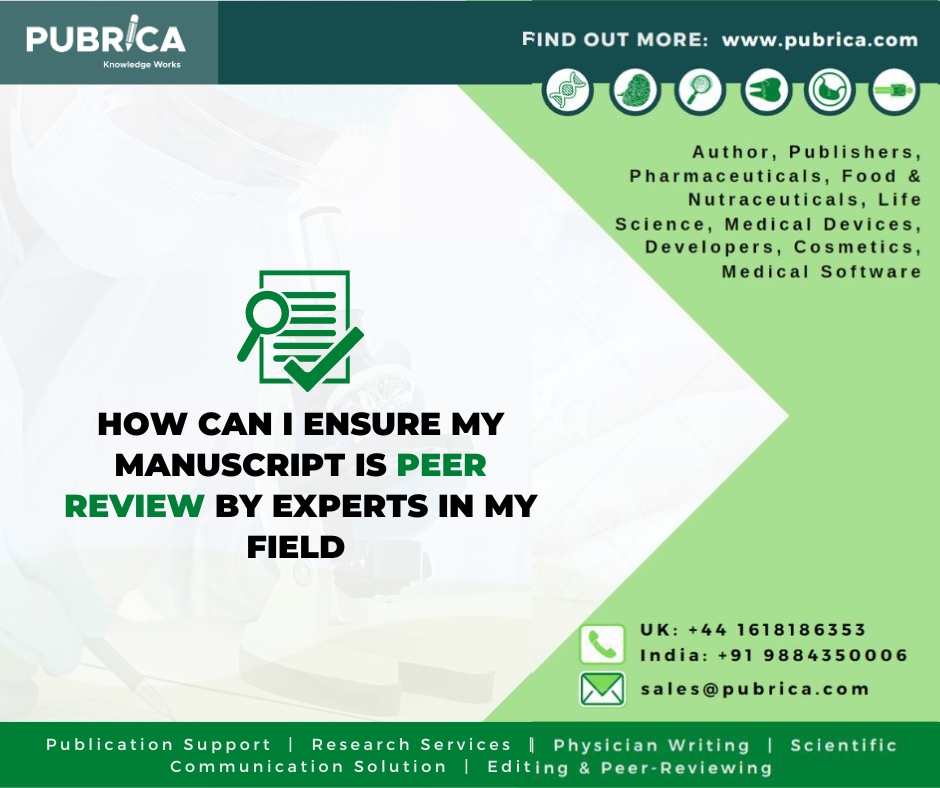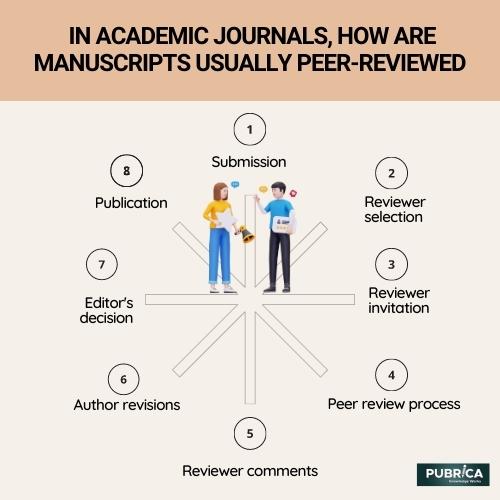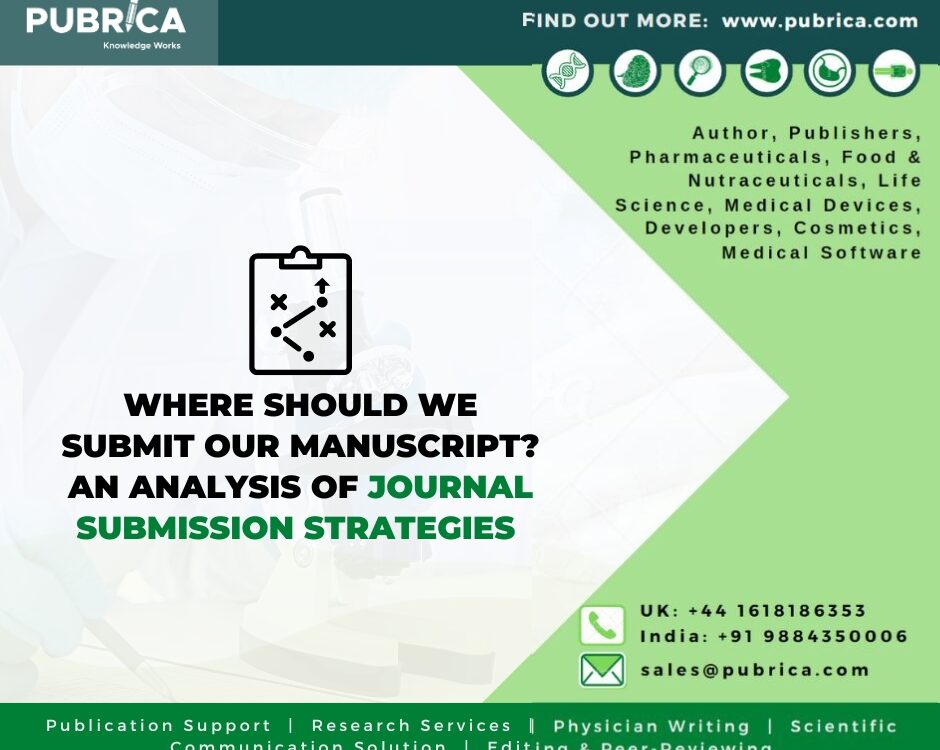
How Can I Ensure My Manuscript Is Peer Review By Experts In My Field
June 29, 2023
How to Prepare a Manuscript on Big Data Analytics
July 15, 2023Introduction
In academic journals, manuscripts are typically peer-reviewed through a rigorous evaluation process involving external experts in the field. The peer review process helps ensure the quality, validity, and significance of the research before it is accepted for publication. Here is a general overview of how manuscripts are usually peer-reviewed:

- Submission: After a researcher submits their manuscript to a journal, it undergoes an initial screening by the journal’s editorial team. They assess whether the manuscript meets the journal submission scope and guidelines. It proceeds to the peer review in the science stage if it passes the initial screening.
- Reviewer selection: The journal’s editor(s) identifies potential reviewers with expertise in the subject area relevant to the manuscript. Reviewers are typically researchers, scholars, or experts who have published in the field themselves.
- Reviewer invitation: Reviewers are invited to assess the manuscript by the editor(s). They can accept or decline the invitation based on their availability and expertise.
- Peer review process: Reviewers evaluate the manuscript for its scientific rigour, methodology, originality, clarity of writing, and contribution to the field. They provide feedback on strengths, weaknesses, and areas for improvement. This assessment may be done through a single-blind review (where the reviewers know the author’s identity but not vice versa) or a double-blind peer review (where the identities of both authors and reviewers are concealed).
- Reviewer Comments: Reviewers typically provide detailed comments, suggestions, and critiques to the editor(s) regarding the manuscript’s strengths and weaknesses. They may recommend acceptance, revision, or rejection based on their assessment.
- Author revisions: If requested, the editor(s) communicate the reviewer’s comments and suggestions to the author. The author then revises the manuscript accordingly, addressing the reviewer’s concerns and making improvements.
- Editor’s decision: The editor(s) consider the reviewer’s comments, the revised manuscript, and their assessment to decide the manuscript. The decision can be acceptance, acceptance with minor revisions, acceptance with major revisions, or rejection. Multiple revisions and reviews may sometimes be required before reaching a final decision.
- Publication: Once a manuscript is accepted, it moves forward in the publication process, which includes copyediting, typesetting, and formatting. Finally, the manuscript is published in the journal, making it accessible to the academic community.
It’s important to note that the peer review process can vary slightly between journal format and disciplines. Some journals may also incorporate additional steps, such as a second round of review or an editorial board meeting to discuss the manuscript’s fate. The overall goal of peer review manuscripts is to ensure the quality and integrity of published qualitative research journals by subjecting them to rigorous evaluation by experts in the field.
To know more about Journal submission, check our study guide, What Are The Process Involved In Journal Submission?
In academic journals of scientific research, manuscripts are typically PubMed peer-reviewed through anonymous evaluation by independent experts in the same or related field as the author(s) of the manuscript. The peer-review process involves several steps:
- The author submits the manuscript to the journal for consideration.
- The editor reviews the manuscript to determine if it is suitable for publication in the journal.
- If the manuscript is deemed suitable, the editor sends it to two or three experts in the field, who are asked to review it and provide feedback.
- The reviewers evaluate the manuscript based on its originality, quality, significance, and relevance to the APA citation format journal article readership. They also check the manuscript for accuracy, completeness, and ethical considerations.
- Based on the reviewers’ feedback, the editor decides whether to accept, reject, or request revisions to the manuscript.
- If revisions are requested, the author(s) make the necessary changes and resubmit the manuscript for further evaluation.
- Once the manuscript is accepted, it goes through a copyediting and proofreading process before publication.
The peer-review process helps to ensure the quality and validity of research published in academic journals.
Conclusion
The peer review process is crucial in academic journals, ensuring the quality and integrity of published research. It involves external experts evaluating manuscripts and assessing scientific rigour, methodology, originality, and contribution. The process involves screening manuscripts by the editorial team, selecting reviewers, and allowing authors to revise their manuscript review. The goal is to enhance research journal quality and meet high academic standards while fostering a culture of quality, transparency, and advancement in academic scholarship.
- Check our sample work to know and learn more about “Journal submission report“.
About Pubrica
Pubrica adheres to the highest standards and regulations of journal publishing ethics in all phases of services and operations. Pubrica follows the International Council of Medical Journal Editors’ (ICJME) authorship rules, and the scope of services will be continuously updated in accordance with the Committee of Publication Ethics (COPE) and International Society of Medical Publication Professionals (ISMPP) principles.
References
- Björk, Bo-Christer. “Acceptance rates of scholarly peer-reviewed journals: a literature survey.” El profesional de la información (2019).
- Björk, Bo-Christer, and David Solomon. “The publishing delay in scholarly peer-reviewed journals.” Journal of informetrics 7.4 (2013): 914-923.


